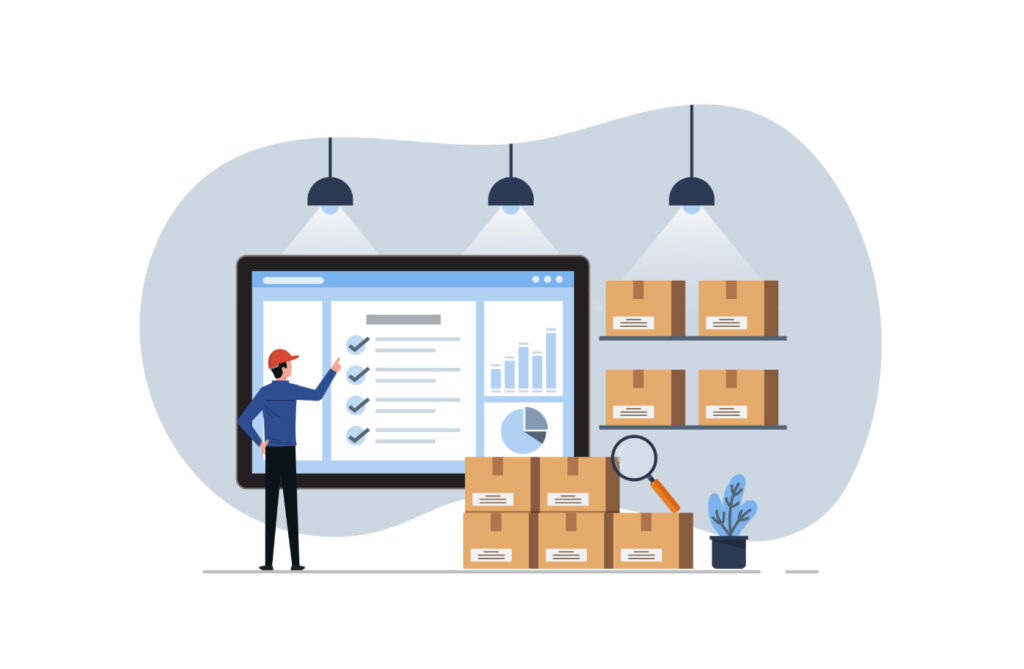A customer relationship management (CRM) system is one of the most effective software platforms that your sales and marketing teams can use. However, in order to make the most of your CRM, you need to understand what a CRM system is and be able to use it properly. Follow this step by step guide to get up to speed on how to use a CRM for your business:
Add Your Users
Once you get your new CRM set up, the first step is adding all the essential users. This will probably entail sending them an invite via email. At a minimum, these invites should include the sales department and probably the marketing department as well, since many CRMs include marketing tools.
However, if your CRM program is part of a larger software stack you might end up adding people from HR, finance, and other departments to the greater software as well. In these cases you might need to set individual or team account roles to ensure that people will only have access to the software modules relevant to their jobs — you don’t want someone from accounting accidentally messing up your CRM parameters.
Train Your Employees
Regardless of whether this is your company’s first CRM or just the latest addition in a string of platforms, your users will all require training on the new system. This could take the form of self-guided video training, in-person workshops for the whole team, live webinars with your assigned CRM rep, or some combination of all three.
We recommend reaching out to both the CRM and your employees about scheduling these training sessions sooner rather than later. Ideally, the training should occur simultaneously with your CRM onboarding, so that users don’t have a long lag between when they have access to the system and learn how to use it.
Also Read: Insightly vs. Zoho: Which CRM is Right for Your Small Business
Customize the Settings
CRM programs allow you to customize many different settings so the software will support your existing workflows. In order to tweak the settings so they will be useful to your team, you need to know the current sales process and account for any changes you wish to make with the new CRM.
It’s very important to figure out these workflows and their accompanying customizations before you import any existing data. This will ensure everything is properly formatted and stored from the get go. This way you can avoid having to fix hundreds or thousands of data entries after the import.
Import Your Existing Data
Once the CRM is configured to your liking, you can begin importing your existing lead and customer data. Many companies are already using a CRM system, so you will need to export your data from the old system and import it into the new one.
Most vendors provide instructions for both importing and exporting data. Be sure to read those beforehand so that you are aware of any quirks in the process. If you have never used a CRM before, then you might need to manually input the data or upload the spreadsheet where you have been keeping track of customer data.
Manage Your Customer Segments
One of the biggest advantages of a CRM is the ability to segment lead and customer data according to various criteria so you can increase customer engagement. Once the data is in the CRM system, you can begin sorting through customer data and segmenting it according to variables that make sense for your sales team.
Once that’s done, you can use your new segmentation to sort leads into different campaigns, find new potential customers, identify audience trends, and more. Don’t forget to set up segmentation rules so any new data you enter will be automatically sorted according to the variables you created.
Figure Out CRM Reporting
Another one of the great benefits of a CRM is getting insights into customer turnover, sales forecasts, and other business insights which are key to making strategic decisions. To take advantage of the reporting features, you will need to determine the metrics that matter most to your business, set up reports to track these KPIs, and decide how often you want a report generated. Once you take care of that, all you have to do is check the reports whenever they’re refreshed to get new insight into your sales and marketing strategies.
Set Up Automation
If you’re not taking advantage of your CRM automation features, then you’re really missing out. All the best CRMs offer automation capabilities to eliminate rote tasks and reduce human error, saving your sales and marketing time and effort that they can spend on more value-added tasks.
While you do need to set these automation rules up and test them to make sure they work properly, once you do that the automation will make your life so much easier. Then moving forward, the CRM will remind reps to schedule followup calls, send nurture emails, and complete other tasks automatically.
Create Your Marketing Assets
Many CRMs come with built-in marketing tools allowing you to create email campaigns, social media posts, and more. In many cases, they also include pre-made templates that you can easily customize with your company colors, logos, and other branding assets.
Once you send out these marketing assets, the CRM automatically tracks customer interactions and puts the data into the database so you can see how your sales and marketing campaigns are doing and update your assets to make them even more effective.
Personalize Your Content
“Dear customer” doesn’t cut it anymore, which is why many CRM platforms offer the ability to automatically personalize your marketing and sales communications using customer data. You will need to decide what data you want to use and set these customization rules up in the CRM, but once complete it will fill in everything automatically, so you don’t have to worry about it again.
Message Your Team
If you’re tired of having to switch windows to email or Slack every time you need to message a sales colleague, you’ll be glad to hear that many CRMs offer messaging tools right in the app or web interface. This keeps all communications with your sales and marketing teams centralized in the software, so you can easily find a past message if needed.
If you prefer to keep using your favorite email client, most CRMs typically offer an integration with personal email accounts. The integration will handle importing the necessary information over to the CRM so you don’t have to double check everything against your email.
Share and Store Documents
Most CRMs allow you to upload documents to the cloud-based platform so you always have a back-up copy. This also means you can create a single database of sales and marketing resources that everyone can access right from the CRM. If your sales PDFs are still hanging out on someone’s hard drive, it’s time to upload them to the software so everyone else can access them.
Integrate the CRM
Nearly every company who uses a CRM will need to integrate it with either personal calendars and emails, social media platforms, outside software, or all of the above. To make the most of your CRM, set up these integrations and test them to be sure they’re working before you need to rely on them for something critical.
We hope this guide helped clarify how to use a CRM. Ready to explore your CRM software options? Check out our CRM software guide to learn about what features to look for and what platforms are top-rated in the CRM category.
Read next: CRM+Bots: Make Them Work (Together) for You
I know how to use CRM, now what?
Now that you’ve read through the article and understand the basics of how to use a CRM, it’s time to figure out which software title is right for you. First, I recommend checking out our CRM Software Guide.
If you need a more specific approach, we also have guides which cover the best CRM for a variety of scenarios:





